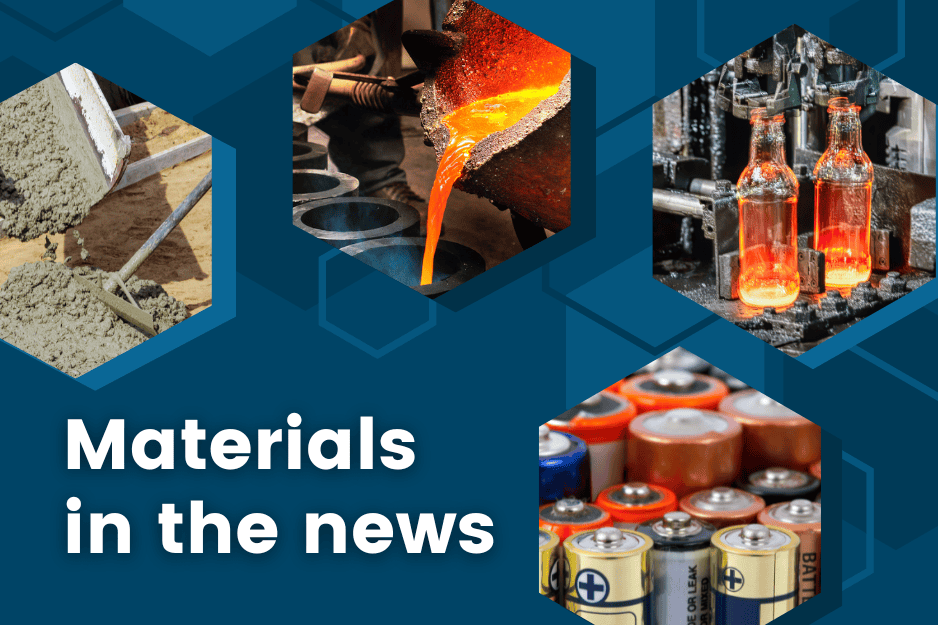
[Image above] Credit: ACerS
NANOMATERIALS
New way to control magnetism in super-thin materials
Researchers introduced a new way to precisely tune magnetism by using ultrathin flakes of chromium(III) phosphosulfide. The layers of atoms in this material naturally form regions with different magnetic properties.
ENERGY
3D-printed ceramics tested to maximize thermal energy storage in molten salts
Researchers collaborating between ICV-CSIC in Spain and at the Odeillo solar furnace in France explored the encapsulation of the molten salts used in concentrated solar power storage within a custom 3D-printed ceramic lattice.
New coating for glass promises energy-saving windows
Rice University researchers and collaborators developed a new glass coating that could help reduce heat loss from leaky windows. The material is a transparent film made by weaving carbon into the atomic lattice of boron nitride.
Heat-conductive plastic–ceramic composite helps prevent electronics from overheating
Northeastern University researchers, in collaboration with the U.S. Army Research Laboratory, developed a lightweight plastic–ceramic composite that conducts heat and can be used to more efficiently cool advanced electronics.
ENVIRONMENT
Designing cleaner, greener concrete that absorbs carbon dioxide
University of Pennsylvania researchers developed a 3D-printed concrete solution based on diatomaceous earth that captures up to 142% more carbon dioxide than conventional mixes while using less cement and still meeting standard compressive-strength targets.
Clay-based membrane technology to extract lithium from water
Researchers at Argonne National Laboratory and the University of Chicago developed an advanced membrane technology that extracts lithium from water. The membrane is made from vermiculite, a naturally abundant clay that costs only about $350 per ton.
Upcycling solar glass waste to use in solid-state lithium batteries
Nanyang Technological University researchers milled solar panel glass waste for use as a filler in solid-state lithium-metal battery cathodes. The resulting battery performance was maintained over 80 charge cycles with an 8.3 % improvement over the reference device.
MANUFACTURING
Electric pulse method yields precisely tuned metallic glass nanoparticles
New York University Tandon researchers developed a new method based on flash Joule heating for synthesizing metallic glass nanoparticles that offers refined control over size, composition, and atomic structure.
OTHER STORIES
New research expands laser technology
Researchers at the University of Illinois Urbana-Champaign developed a room-temperature, eye-safe, photopumped photonic-crystal surface-emitting laser by embedding silicon dioxide into the photonic crystal layer, addressing the challenge faced with special air holes.
Adding up Feynman diagrams to make predictions about real materials
California Institute of Technology researchers found a fast and efficient way to add up large numbers of Feynman diagrams, the simple drawings physicists use to represent particle interactions. The new method has already enabled the researchers to solve a longstanding problem in the materials science and physics worlds known as the polaron problem.
Author
Lisa McDonald
CTT Categories
- Weekly Column: “Other materials”
Related Posts
Other materials stories that may be of interest for December 3, 2025
December 3, 2025
Other materials stories that may be of interest for November 26, 2025
November 26, 2025
Other materials stories that may be of interest for November 19, 2025
November 19, 2025